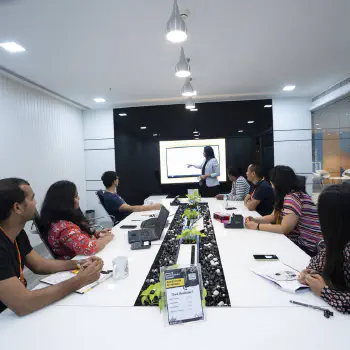In observance of LGBTQIA+ pride month, many organizations across the world have made efforts to be more inclusive and welcoming to the LGBTQIA+ community. Some have created rainbow flags and stickers to display in their lobbies and offices, while others have held events specifically for queer and trans* employees. These celebrations are an important reminder that all individuals should be treated with respect and dignity, no matter what their sexual or gender identity may be.
However, these initiatives are simply the beginning of building an inclusive workplace, and they are certainly not enough. This post is not about hosting “queer themed parties”, “social media strategies” or even suggestions on logo redesigns for your brand. It’s about helping you with a few thought starters to help support your queer and trans* colleagues and practice allyship actively, even after Pride Month.
- Unlearn your own biases:
This month is not about feeling “proud” of your allyship and inclusivity or proving it to others. It’s about checking your biases and finding ways to do things you haven’t done before. It’s about learning things about the community that you’ve taken for granted or even ignored. Listen to the voices and stories of the LGBTQIA+ community. Understand that this is a heterogeneous group just like any other, and each person from the community can have their own unique needs and struggles. Take time to sit with your personal thoughts, feelings and biases. Work through them with a fellow peer doing ally work or an affirmative therapist. You will make mistakes and your allyship will be imperfect. But stay committed to learning from them and doing better. - Create an LGBTQ+-friendly (affirmative) policy in your company:
Work with folks from the queer community including employees who openly identify within the LGBTQIA+ spectrum. Actively reach out to other queer affirmative organizations who have established policies, and work on ways to personalize them to your organization and employees’ context. For example, apart from making your hiring process more diverse, create a POSH framework that is inclusive of queer and trans folks, push for a non-binary dress code (or even better, don’t enforce a dress code in the first place!), create gender-neutral bathrooms, expand any policies related to dependents to include any partner of employees irrespective of marital status, gender or sexual identity etc. While these are simply examples, it may be most helpful to connect with queer organizations to know more about specific need-based policies and frameworks that you can implement, - Make sure to visibly and officially recognize LGBTQ+ Pride Month, even after Pride Month ends:
This can be done by continuing to promote diversity and inclusion in your organization, unlearning your biases around the LGBTQIA+ community and actively advocating for their unique needs. - Understand that ‘Personal’ and Professional’ are interconnected in this context:
Managers and organizations may often hold the idea of differentiating between personal and professional boundaries. This is important in terms of work-life balance. But this is could be used as a shield to not truly incorporate inclusive practices, because talking about one’s gender and sexual identity is seen as a ‘personal’ topic. It’s important to recognize that it’s actually a function of cis-het privilege to be able to separate one’s professional space from one’s gender and sexual identity. When a queer or trans person has to navigate the workplace by being made to hide their identity out of fear and stigma, not openly celebrate an anniversary or a partner’s birthday, not be able to share and grieve with their close colleagues about a break up, needing to fit into certain dress codes with colleagues or stakeholders which does not align with the gender they are - all of this and more can impact the employee’s mental health and how safe they feel within the workplace. So yes, the personal is political, and the personal impacts our professional lives too. - Provide resources and support for LGBTQ+ employees:
In order to create a more inclusive workplace for LGBTQ+ employees, companies should provide resources and support. One way to do this is by providing training on LGBTQ+ contexts and concerns to the larger organization. This can help employees learn more about the community and how to be allies. Companies can also create mental health programs specifically for LGBTQ+ employees (who may have been open about their identity). This can help those who are struggling with discrimination or anxiety related to their identity. By providing these resources, companies can help make their workplace more welcoming for everyone. - Encourage open discussion around concerns that LGBTQ+ folks may face in the workplace:
In order for a company to be inclusive and welcoming to LGBTQ+ employees, it is important for the company to have continuous open dialogue about LGBTQ+ related topics in the workplace, and most importantly led by and centered around queer and trans* employees. This allows employees to feel comfortable being themselves at work and feel safe discussing any issues they may have. This also means not filtering any such conversations if they come up in contexts that may seem “irrelevant” to you or your colleagues. - Don’t force employees to open up about their identity or experience with their colleagues: Organizations feel that Pride month is where a motivational speaker (a queer person) should enter the organization and talk about their story with employees. A word of caution here for managers and founders is to not make the goal of inclusion to help employees from the LGBTQIA+ community ‘come out’. Nudging queer and trans employees to ‘come out’ should never be the intent behind any inclusive initiatives. Coming out is a deeply personal process and each individual has their own journey with it, and more than that, queer individuals do not owe ‘coming out’ to us. The idea of inclusion is to make the workplace safe and sensitive towards all employees, irrespective of whether managers are aware of the employees’ context related to their gender and sexual identity.
- Find solutions that work for your context:
Would it make sense to have a queer support group within your organization? Do you think your organization requires multiple sensitivity trainings? Or do you think that on the ground level, everything from the way your policies/hiring practices are framed, to even insurance terms are inherently discriminating towards queer employees? Talk to your employees, conduct safe focus groups (if required) facilitated by queer folks, and find ways of drafting, implementing, and adapting solutions that work for your context and employees’ needs.
Some more thoughts:
- Find more ways to educate yourself. Don’t put the onus of educating yourself about the LGBTQIA+ community on queer people.
- If you’re organizing a workshop, try organizing a dedicated workshop on the problems and experiences of each identity within the LGBTQI+ community. It’s a heterogeneous group, just like any other, and it’s important to dedicate time and effort to learn more about each identity.
- Follow queer folks and thought leaders on social media to actively continue your unlearning and learning process.
- Don’t ask queer folks for pro-bono work. It takes a lot of vulnerability, courage, time and energy for any kind of workshop - and more so, if someone is sharing struggles and experiences that are personally relevant to them as a medium to help you build your allyship. Respect their labour and compensate them adequately.
This article is about helping you find ways of being not just an inclusive organization, but to nudge yourself towards active advocacy and allyship. There’s no one-size-fits-all approach to making the workplace a safe space and creating a truly inclusive and safe culture takes time and active effort from managers, employees, and every stakeholder. Any change starts with a questioning of taken for granted norms. However, it’s important to recognize this as a START. Your allyship and inclusion as an organization is an everyday practice.


















